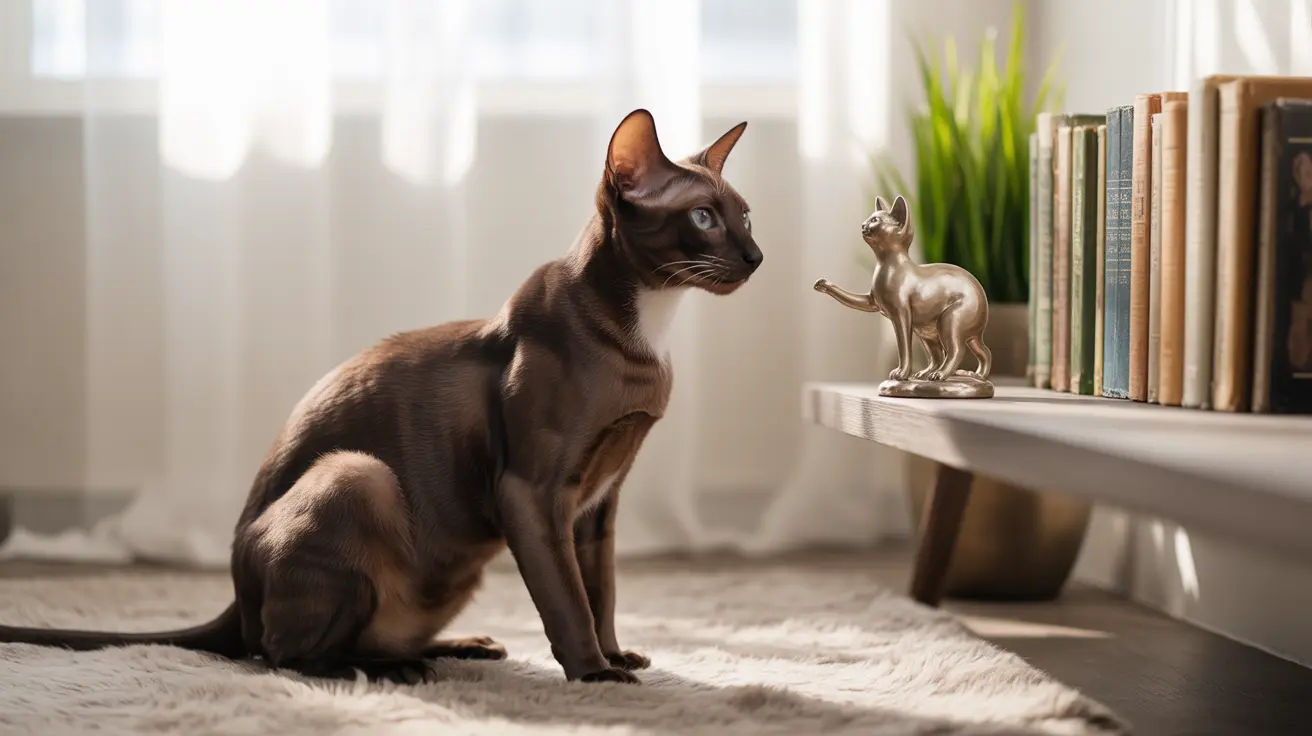For cat lovers and breeders alike, understanding rare cat colors opens up a fascinating world of feline genetics and extraordinary beauty. From striking albinos to the elusive chocolate and cinnamon coats, some cat colors are so uncommon that they're considered true genetic treasures. In this comprehensive guide, we'll explore the most unusual cat coat colors, their genetic origins, and what makes them so special.
Understanding Truly Rare Cat Colors
The rarest cat colors are determined by specific genetic combinations that occur infrequently in nature. These unique colorations often require multiple recessive genes to align perfectly, making them exceptionally uncommon outside of specialized breeding programs.
Albino Cats: The Rarest of All
True albino cats represent the rarest of all feline coat types. These cats completely lack melanin due to a mutation in the C gene, resulting in pure white fur and striking pink or blue-tinted eyes. Unlike white cats, albinos have no pigmentation whatsoever and often face unique health challenges due to their genetic makeup.
The Chocolate and Cinnamon Spectrum
Chocolate cats are remarkably rare, requiring two copies of a specific recessive gene. Even more unusual are cinnamon cats, which need an additional genetic mutation. These warm, rich colors are most commonly found in specific breeds like the Havana Brown and Oriental Shorthair.
Rare Color Dilutions and Variations
Lilac and Fawn Cats
Lilac cats display a gorgeous dusty gray-pink coat that results from a dilution of the chocolate gene. Similarly, fawn cats show a diluted version of the cinnamon color. Both variations are extremely uncommon and highly sought after by cat enthusiasts.
Cream and Amber Varieties
Cream-colored cats emerge from a dilution of the orange gene, while the amber coloration is almost exclusively found in Norwegian Forest Cats. These colors represent some of the most unusual natural variations in the feline world.
Rare Pattern Combinations
Beyond solid colors, certain patterns can make a cat's coat even more unusual. The colorpoint pattern, famous in Siamese cats, is actually a form of partial albinism. The striking chinchilla pattern, where only the tips of the fur are colored, creates an ethereal appearance that's rarely seen outside specific breeds.
Genetics and Inheritance
The complexity of feline coat genetics means that producing cats with rare colors often requires careful breeding and understanding of genetic inheritance. Multiple genes interact to create these unusual colors, including the base color genes, dilution genes, and pattern-modifying genes.
Health Considerations
Some rare coat colors come with specific health considerations. White and albino cats often have increased sensitivity to sunlight and may be prone to deafness. Understanding these potential issues is crucial for proper care of cats with unusual colorations.
Frequently Asked Questions
What is the rarest cat color and how does albinism affect cats?
True albinism is the rarest cat color, caused by a complete lack of melanin. Albino cats have white fur, pink or blue-tinted eyes, and are particularly sensitive to sunlight. They may also experience vision problems and require special care to protect their sensitive skin and eyes.
How do genetics determine rare coat colors like chocolate, lilac, and cinnamon in cats?
These rare colors are determined by specific combinations of recessive genes. Chocolate requires two copies of the recessive b allele, while cinnamon needs an additional mutation. Lilac is a dilute version of chocolate, requiring both the chocolate gene and the dilution gene.
What are the most uncommon cat coat patterns, such as colorpoint or chinchilla, and which breeds typically have them?
Colorpoint patterns are most famous in Siamese cats but rare in other breeds. The chinchilla pattern is predominantly found in Persian cats and creates a sparkling silver appearance. These patterns result from specific genetic combinations that affect how color is distributed in the coat.
Why are pure white cats rare and what health issues are associated with white and albino cats?
Pure white cats are rare due to specific genetic requirements. They often face increased risks of deafness, especially if they have blue eyes, and may be more susceptible to skin cancer due to reduced pigmentation protection.
How does the dilute gene influence rare cat colors like cream, lilac, and fawn?
The dilute gene modifies existing colors by reducing the amount of pigment in the coat. It turns black to blue, chocolate to lilac, and cinnamon to fawn. When combined with orange, it creates the cream color. These dilute variations are generally rarer than their original colors.
Conclusion
The world of rare cat colors is a testament to the incredible genetic diversity within our feline friends. From the striking appearance of true albinos to the subtle beauty of lilac and fawn cats, these unusual colorations continue to fascinate cat lovers and geneticists alike. Understanding these rare colors not only helps us appreciate their unique beauty but also ensures proper care for cats with special genetic makeups.






